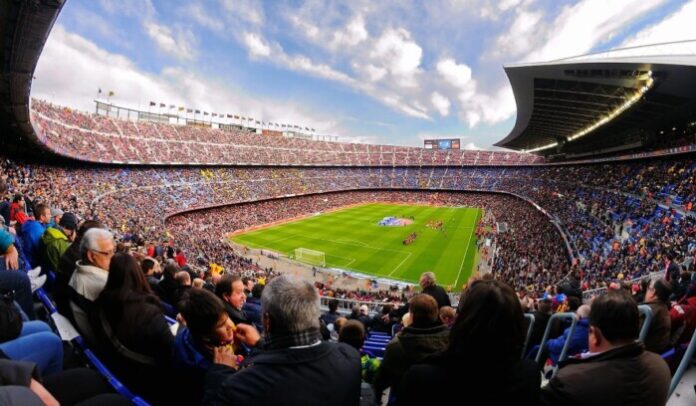Soccer, often called the “beautiful game,” is more than just a sport; it’s a global phenomenon that unites millions of fans from diverse backgrounds. The sport’s immense popularity is reflected not only in the fervor of its followers but also in the grandeur of its stadiums. The world’s largest soccer stadiums are more than mere venues—they are monumental structures that symbolize the sport’s power to bring people together, encapsulating rich histories, memorable matches, and the fervent spirit of their fan bases. Each of these colossal arenas, with its awe-inspiring capacities, creates an atmosphere that amplifies the thrill of the game and provides an unforgettable experience for players and spectators alike.
In this article, we delve into the ten largest soccer stadiums in the world, each known not only for its size but also for its unique place in the sport’s history. These stadiums host some of the most iconic matches and events, serving as cathedrals of football, where the sport’s legends have left an indelible mark. Let’s take a look at these stunning structures that stand as testaments to the unifying power of soccer.
Top 10 largest Soccer Stadiums in the world
Rungrado 1st of May Stadium – Pyongyang, North Korea
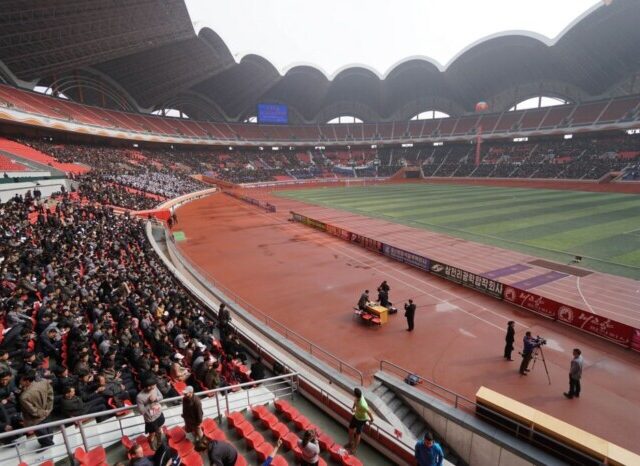
With an astonishing capacity of 114,000, the Rungrado 1st of May Stadium is the biggest soccer stadium in the world. Situated in Pyongyang, North Korea, this colossal structure is used for both sporting events and mass cultural performances. The stadium was inaugurated on May 1, 1989, and its unique scalloped roof design adds to its iconic appearance.
Primarily used for soccer and athletics, the Rungrado 1st of May Stadium has hosted numerous international tournaments and serves as a central hub for the nation’s sporting activities. Aside from sports, it is also famous for the annual Arirang Festival, a massive gymnastics and artistic event involving thousands of performers, showcasing North Korea’s cultural pride and discipline.
Salt Lake Stadium: Kolkata, India
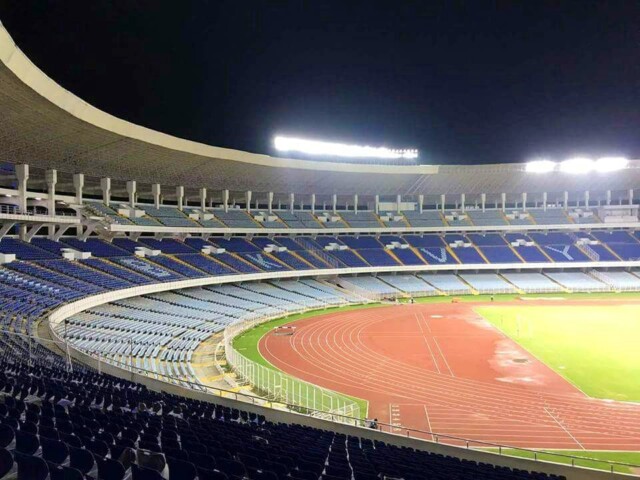
Salt Lake Stadium, officially known as Vivekananda Yuba Bharati Krirangan, is not only one of the largest stadiums in the world but also a cornerstone of Indian football. Since its inauguration in 1984 in Kolkata, India, it has served as a venue for both cultural and sporting events, cementing its status as a multi-purpose facility.
The stadium’s striking architecture, characterized by a unique three-tier structure, ensures that all of its 85,000 seats have unobstructed views, making it a favorite among fans for the atmosphere it generates, especially during significant matches.
Over the years, Salt Lake Stadium has hosted numerous high-profile events, including the 2017 FIFA U-17 World Cup, which spotlighted its capability to handle international sports events seamlessly. It also serves as the hallowed ground for the intense Kolkata Derby, one of the oldest and fiercest rivalries in Indian football between ATK Mohun Bagan FC and East Bengal FC. These matches not only draw in crowds by the thousands but also embody the passionate spirit of football in Kolkata, making the stadium much more than just a sports venue—it’s a vibrant hub of activity that resonates with the cultural heartbeat of the city.
Camp Nou – Barcelona, Spain
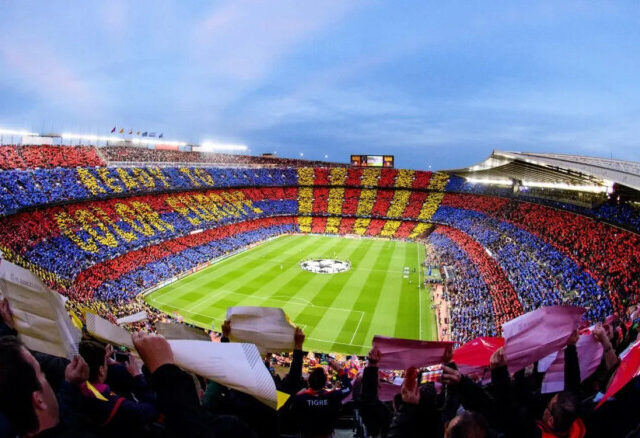
Home to FC Barcelona, Camp Nou is the largest stadium in Europe with a capacity of 99,354. It opened in 1957 and has since become synonymous with Barcelona’s footballing excellence and Catalonian pride, even inspiring a popular Lego soccer stadium set that captures its iconic design and grandeur. The stadium’s sweeping terraces have witnessed countless historic matches, making it a revered site for football enthusiasts worldwide.
Camp Nou is not just a stadium; it’s a pilgrimage site for fans of beautiful, attacking football. The stadium offers an electrifying atmosphere, especially during El Clásico matches against Real Madrid, and its accompanying museum attracts millions of visitors eager to relive the club’s storied past and present.
FNB Stadium (Soccer City) – Johannesburg, South Africa
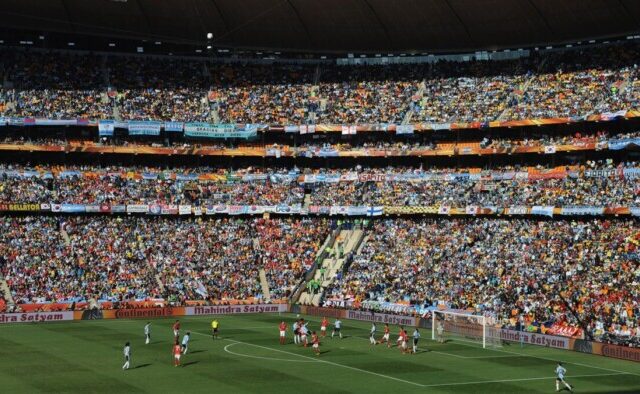
With a capacity of 94,736, FNB Stadium, also known as Soccer City, is the largest stadium in Africa. It is famed for hosting the 2010 FIFA World Cup final, where Spain clinched their first-ever World Cup title. The stadium’s design, unlike the modern Nashville soccer stadium, is inspired by African calabash pots, giving it a distinctive look that reflects its cultural significance. Beyond its architectural beauty, FNB Stadium has been the stage for some of Africa’s most momentous football events, including major continental tournaments and political gatherings. It stands as a symbol of unity and celebration, embodying South Africa’s love for the game.
Rose Bowl – Pasadena, USA
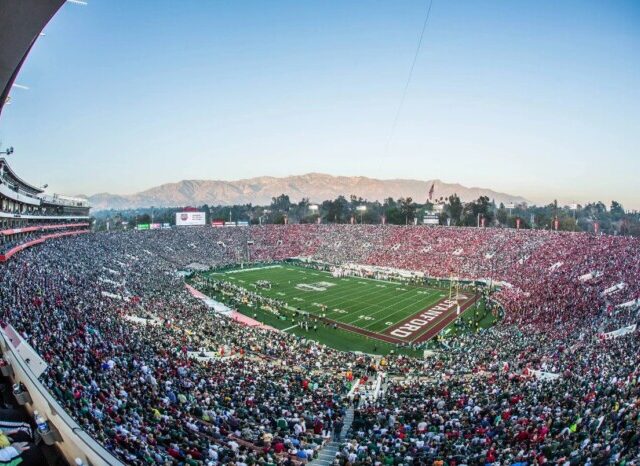
The Rose Bowl, located in Pasadena, California, with a seating capacity of 92,542, is one of the most historic soccer stadiums in the United States, much like the Monterrey soccer stadium is a contemporary icon in Mexico. Built in 1922, the Rose Bowl has hosted numerous iconic events, including the 1994 FIFA World Cup final and the 1999 Women’s World Cup final, cementing its place in soccer history.
Its classic bowl-shaped design ensures excellent sightlines for spectators, similar to the state-of-the-art visibility offered at Monterrey’s Estadio BBVA. Both stadiums have been the backdrop for legendary moments in their respective countries, with the Rose Bowl’s rich legacy and picturesque setting making it one of the most celebrated stadiums in North America.
Wembley Stadium – London, England
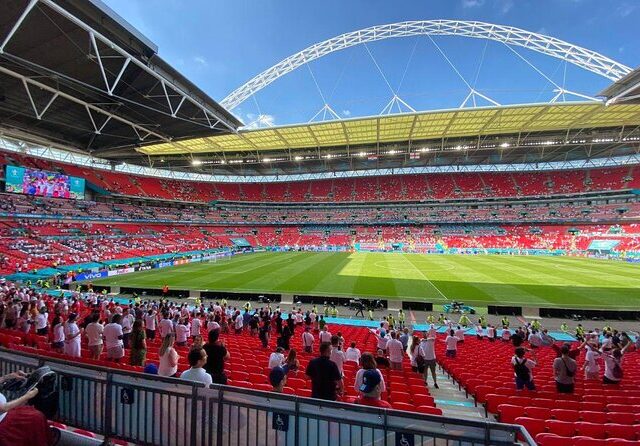
With a capacity of 90,000, Wembley Stadium is one of the largest soccer stadiums in the world and one of the most iconic venues globally. The current stadium opened in 2007, stands on the site of the old Wembley, which was renowned for its Twin Towers. Known as the “Home of Football,” Wembley hosts the English national team’s matches, FA Cup finals, and major European finals.
Its distinctive arch, which is visible across London, symbolizes its status as a global footballing landmark. Wembley’s storied history and world-class facilities make it a top choice for hosting some of the sport’s most prestigious events.
Gelora Bung Karno Stadium – Jakarta, Indonesia
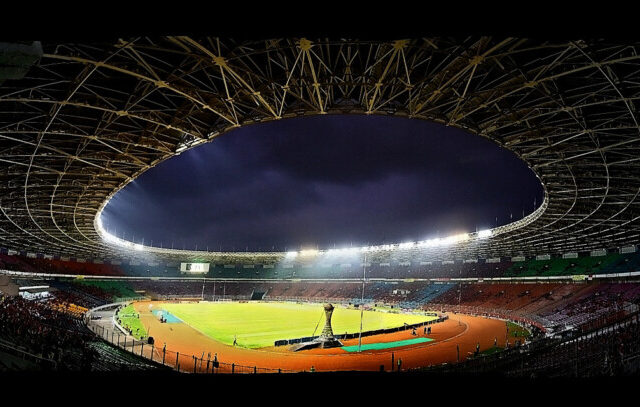
Gelora Bung Karno Stadium, with a capacity of 88,083, is the largest soccer stadium in Southeast Asia. Opened in 1962 and named after Indonesia’s first president, Sukarno, the stadium serves as a centerpiece for Indonesian football, hosting national team matches and major international tournaments. Renovated multiple times to meet modern standards, Gelora Bung Karno blends historical significance with modern functionality, representing Indonesia’s passion for soccer and its drive to be a prominent player on the international stage.
Estadio Azteca – Mexico City, Mexico
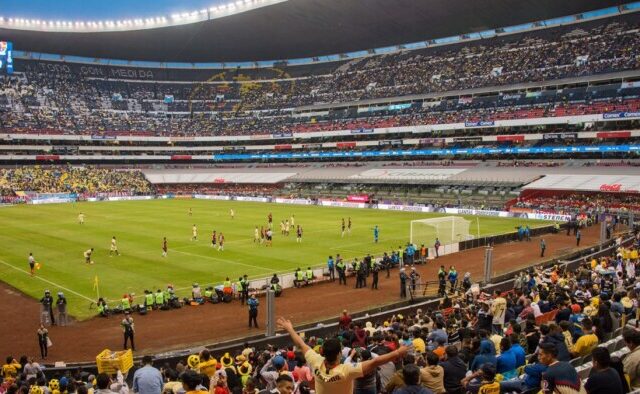
With a capacity of 87,523, Estadio Azteca stands as one of the largest soccer stadiums in the world, similar in prominence to the emerging St. Louis soccer stadium. Estadio Azteca is notably the only venue to have hosted two FIFA World Cup finals (1970 and 1986). The stadium is revered for its vibrant atmosphere and passionate fan base, making it a fortress for the Mexican national team and the home stadium for Club América.
Its grand design and imposing structure place Estadio Azteca among the most famous football stadiums globally, with its history intertwined with legendary moments such as Diego Maradona’s “Hand of God” and “Goal of the Century,” reminiscent of the ambitious spirit fueling the new stadium in St. Louis.
Bukit Jalil National Stadium – Kuala Lumpur, Malaysia
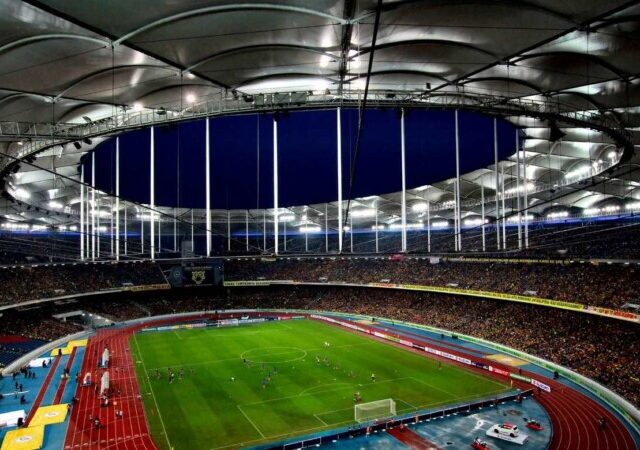
Opened in 1998, Bukit Jalil National Stadium boasts a capacity of 87,411, making it one of the largest stadiums in Asia, rivaling the expansive scale of the Miami soccer stadium. It serves as the primary venue for the Malaysian national football team and major sporting events like the Southeast Asian Games. Like Miami’s commitment to becoming a hub for international soccer in North America, Bukit Jalil is known for its modern design and vibrant atmosphere during international matches, symbolizing Malaysia’s dedication to sports and its growing influence in Asian football.
Borg El Arab Stadium – Alexandria, Egypt
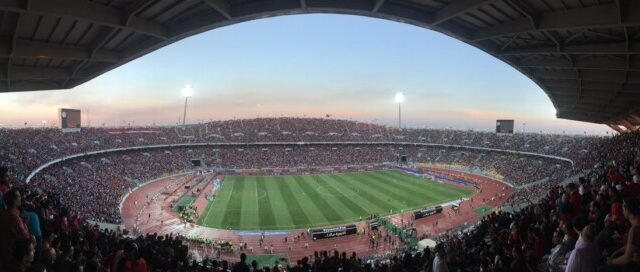
With a capacity of 86,000, Borg El Arab Stadium is the largest soccer stadium in Egypt and one of the largest in Africa, similar in size to the newly constructed Nashville soccer stadium. Opened in 2007, Borg El Arab Stadium serves as the main home for the Egyptian national football team, hosting key qualifying matches and continental tournaments. Its modern facilities and grandeur make it a standout venue in African football, representing Egypt’s strong footballing heritage and its aspirations on the continental and global stage, much like how the Nashville venue symbolizes the growing importance of soccer in the United States.


